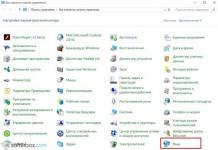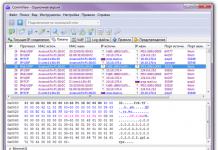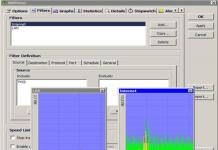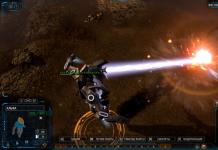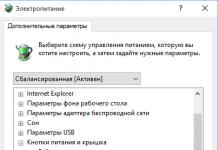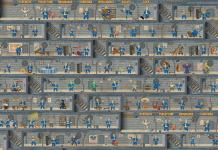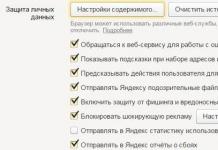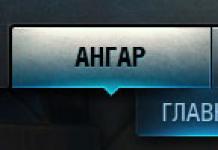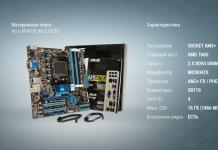Disk Drill for Windows is a free program for data recovery in the Windows operating system. The Disk Drill program recovers data from the hard drive, external storage media (external hard drive, flash drive, memory card, etc.). File systems supported: HFS/HFS+, FAT16/FAT32, NTFS, EXT3, EXT4 and others.
You can lose data from your computer due to accidental deletion, formatting, damage to the drive, loss of a partition, emptying the recycle bin, etc. It happens that very important information is lost, so there is a need to recover deleted files.
The task of data recovery is solved by special programs, with the help of which the user can try to recover lost files. Why try? Because it is not always possible to recover files if the files are damaged or completely overwritten. This must be taken into account.
Disk Drill PRO for Windows is a special free version of the program for the Windows operating system. The Disk Drill program is well known to Mac OS X users. There are two versions of the application available for the Mac OS X operating system: the free Disk Drill Basic and the paid Disk Drill PRO.
Disk Drill uses three recovery modes:
- Undelete - undoes deletion of files from a disk or media protected using Recovery Vailt mode
The Disk Drill PRO program works on Windows 10, 8.1, 8, 7, Vista, XP operating systems. You can download Disk Drill from the official website of the manufacturer: the American company CleverFiles.
Disk Drill Interface
After launching, the Disk Drill program detects all the computer’s drives for a while: hard drives, external drives connected to the computer. Disk Drill has a very simple interface in English.
The main window of Disk Drill displays a list of disks of this computer: hard drive, external drives connected to the computer: flash drives, external hard drives, memory cards, etc. Opposite each disk there is a “Recover” button, then there is an arrow for entering the context menu, with additional recovery options.
To protect this disk, using the “Protect” button, the “Recovery Vailt” mode is used. Using the "Extras" button, you can create a disk image in DMG format in order to recover data from the image, and not directly from the computer disk.
Data recovery in Disk Drill
Before restoring, close all programs currently running on your computer. When restoring, save the data on another drive to increase the chances of a positive result. Remember that it is not always possible to recover files, because the files may be damaged or completely overwritten.
Recovering large files is particularly difficult due to disk fragmentation. Fragments of a large file are located in different places on the disk. After deleting a file, new data is written in place of the fragments. Therefore, data recovery programs often cannot recover the entire file. Monitor the condition of your computer and do it regularly.
Select a computer drive or external drive to recover files. A computer's hard drive can have multiple partitions. In order not to scan the entire hard drive, but to immediately select the desired partition, click on the triangle-shaped button located to the right of the disk name. Select the desired hard drive partition.
To start file recovery, click on the “Recover” button, in this case, all recovery methods will be used. If you need to select the recovery mode yourself, click on the arrow located next to the “Recover” button. In the context menu that opens, select the desired action:
- Run all recovery methods - run all recovery methods (default)
- Undelete protected data - canceling file deletion using Recovery Vault mode
- Quick Scan - quick scan
- Deep Scan - deep scan
After selecting the method, the search for deleted data on the selected disk will begin. For scanning, I chose an external USB drive (flash drive). The scanning process status is displayed in the panel in the program window.
A list of detected files located in folders will appear in the Disk Drill program window. Scanning can be stopped using the “Pause” button, or canceled by clicking the “Cansel” button. Using the “Save Sessions” button, data about the scanning session is saved.
If the disk being scanned is large, the scanning process will take a long time.

After scanning is completed, in the program window you will see folders with found files. By default, a list of all found files is displayed. The results can be filtered by file type: pictures (Pictures), videos (Video), documents (Documents), audio (Audio), archives (Archives), by size (...by size), or by date (...by date).

Unfortunately, not all files can be recovered, or recovered completely. This must be taken into account when restoring information.
Click on the magnifying glass image to view the file. Files to be restored, such as images, will be visible in the viewer.

For example, this image can be restored without problems.

In Disk Drill you can restore an entire folder of files, or just individual files. In the Disk Drill window, mark individual files or folders for data recovery.
I selected the "Pictures" folder with images. By default, the program saves the recovered data to the “Documents” folder of the user profile. If necessary, you can change the directory to save the recovered files. To do this, click on the button in the form of a folder, which is located on the panel opposite “Recover to:”.
To start the process of restoring and saving data, click on the “Recover” button on the panel.

Once the recovery process is complete, enter your Documents folder (or another folder). The "Pictures" folder contains folders named after the image format, in this case "jpg". When you open the folder, you will see the recovered pictures.

Using Recovery Vault Mode
When using Recovery Vailt mode, all files on the disk are indexed and the location of all fragments is recorded. This mode significantly speeds up and increases the chances of successful data recovery.
To enter Recovery Vailt mode, click on the “Protect” button, which is located opposite the desired drive (hard drive, removable media, etc.).
After this, a window will open in which you can enable or disable the Recovery Vailt mode using the buttons: “ON” and “OFF”.
You will see two options in the window:
- Choose folder to protect - select a folder to protect
- Choose files to exclude from protection - select files to exclude from protection
Using the “Add folder” button you can add files for protection. By default, some folders are added for protection in Recovery Vailt mode. You can remove a folder from the protected list using the “Delete” button.
In a similar way, you can add files to exceptions that do not need to be protected from deletion. This option also adds some settings.
After clicking on the “Reset to defaults” button, you can reset the Recovery Vailt mode settings to default, in each option separately.

To go to the main window from Recovery Vailt mode, click on the “Back” button.
Conclusions of the article
Disk Drill PRO for Windows is a free file recovery program. Using Disk Drill, you can recover lost data from your computer and external drives connected to your computer: images, videos, audio, documents, archives, disk partitions, etc.
Want to recover deleted files on Mac OS X, such as important business documents, music, photos or videos? Have files or entire partitions disappeared from your Mac? Having problems accessing a flash drive or memory card? We will help you by providing simple and reliable data recovery for Mac OS X.
Disk Drill will help you not only recover data. The program also contains useful hard drive tools that will help you clean up your Macintosh, find duplicate files, create backups, and monitor the health of your drive. By downloading Disk Drill, you will receive comprehensive protection for your entire disk.
Disk Drill allows you to scan and recover data from any device, including Macintosh hard drives, external hard drives, cameras, iPhones, iPads, iPods, Android devices, flash drives, Kindles, and memory cards. In many cases, Disk Drill will scan your device even if it is unstable, unreadable, or has damaged partitions. Using powerful algorithms, Disk Drill provides reliable data recovery for Mac.
Disk Drill knows the easiest way to recover data on Mac OS X. Just one click starts a powerful scanning process that will show you a list of files to be recovered. By previewing these files, you can easily determine which of them will be successfully recovered. If you use data protection features, some methods for recovering files on your Mac will be free. If not, just a small update will allow you to recover deleted files and continue working.
Has your hard drive or memory card suddenly stopped being detected or appears empty? This may be due to a damaged partition. Your data may still be on the media, but the "map" that the system needs to determine the location of the data may be lost. Disk Drill will repair damaged partitions and return your data if it is still there. All connected devices are supported. Depending on the type of file system, different data recovery algorithms are used. Even if the device has been formatted, the data can still be recovered.
This can happen to anyone, especially when it comes to mobile devices: You may accidentally delete photos, messages or documents. But don't worry, Disk Drill 3 will help you recover all your lost data on Android.
Accidentally clicked in the wrong place? We will help you get your deleted data back to your iPhone or iPad. Disk Drill can recover various file formats on your iOS device such as call history, contacts, messages and more.
Disk Drill is a popular program among Mac users. But now it has become available for devices running Windows. This is a free utility that recovers deleted files on disks and other types of media.
Advantages
The user has access to one of three versions of Disk Drill:
- Basic (free, recovers up to 500 MB);
- PRO (available for installation on 3 PCs);
- Enterprise (unlimited commercial license).
Among the programs used to recover files on a computer, Disk Drill has distinctive advantages.
Using the program
Download the utility from the official website and install it. The window will display all storage media connected to the computer (hard drives, solid-state drives and memory cards). In the upper right part, you can open hidden partitions or volumes. 
Data recovery
- To restore data, select one of the local drives or removable media. In the drop-down list next to the “Recover” button, select one of the scanning methods:

The scanning process can be stopped or paused at any time.
- After scanning, the window will display the files that the utility found on the drive.
- Use the filter located on the left side to select files of a specific format (video, photo, audio, documents). You can also sort them by date of deletion or size.
- Specify the files you are going to recover. If desired, you can view them by clicking on the “magnifying glass” icon.

- Select the folder where the files will be restored.

- Click the "Recover" button.

Recovery Vault feature
The feature in Disk Drill tracks deleted files in folders you select and records their metadata. It helps you recover data faster if you need to.
- To launch Recovery Vault, in the main utility window, click the “Protect” button on the selected disk.
- Specify the folders you want to monitor in “Choose folders to protect”.

- Specify exclusions for tracking in the “Choose files to exclude from protection” section.
 If necessary, add exceptions to the types of files that you consider necessary.
If necessary, add exceptions to the types of files that you consider necessary. - Set the Recovery Vault switch to On to launch the feature.
- Damage and inability to open the memory card.
- Support for new file systems: exFAT and EXT4.
- Restore data structure to its original location (byte-by-byte), including complete partitions that were damaged when the media was formatted or during a power outage.
- HEX mode for presenting recovered files for preview.
- Recognition of new file types: 3DM, MLV, NGRR, TIB, PSAFE3, MOBI, JKS, ICASH, GPX, GP3, GP4, GP5, AFDESIGN, ASF, DOC, KEYCHAIN, MID, MOV, MPG, RTF, SQLITE, TIFF, ZIP .
- Increased data recovery speed.
- Improved save, load and unscan process for lost data.
- Improvement of the program activation procedure to the PRO version.
- Changed user interface when checking recoverable files found during scanning.
- Improved UI translation for different languages.
Additional functions

Disk Drill v.2
Disk Drill 2 adds new features to the program and expands its scope of use.
Conclusion
Disk Drill recovers deleted data from different types of drives. To do this, use one of the three available operating modes. The user can control the process, which makes file recovery much more efficient.
Disk Drill is a modern tool for recovering lost information from storage media. The media can be anything: hard drive, flash drive, SSD, or even hidden partitions of an external HDD. The program is already well known to MAC OS users, but has recently been released for Windows.
The application is designed to recover deleted data, emptied even from the Recycle Bin, formatted, broken, etc. files. In fact, everything that was lost can be brought back to life, at least try. Since Disk Drill is quite a powerful tool, there is a high probability that you will still be able to see the recovered data.
What affects information recovery?
This question is very important; it affects the use of the program, since there are simpler situations and, conversely, those in which nothing can be done. To understand the level of complexity of the situation, you need to know a little theory.
The disk consists of cells for recording data and as they are filled and used, it retrieves or enters information into this storage in the form of machine code (ones and zeros).
When you decide to delete data, it is not actually erased, it is simply given a status that it is suitable for overwriting.
Bytes of information with this mark are not displayed by Windows, but still exist. To extract such data, information recovery programs are used, including Disk Drill.
This leads to the conclusion that it is impossible to restore files if they have already been overwritten. This process is quite lengthy, but the more actively the HDD is used and the older recording you want to restore, the less chance there is. Therefore, if you accidentally deleted files, it is better to use the drive as little as possible until the information is restored.
Difficulties also arise when restoring large files larger than 1GB. The fact is that information is recorded in fragments in different cells, and the more fragmented the bytes of information are, which are scattered in different corners, the more difficult it is to restore them. Therefore, defragment the disk more often, this will have a positive effect on the speed of the HDD and will make it more likely to recover data.
The most difficult thing is with video files, they require absolute integrity, and if you come to your senses after a while, then there may be incomplete data. On the contrary, most likely you will be able to recover the most important files in docx, txt, mp3, dll and other formats; these are where the main value lies.
How to recover information using Disk Drill?
The program comes in several modes: a more functional, Pro version - paid and standard, which is enough for ordinary tasks - absolutely free.
Key benefits of Disk Drill:
- Free, functional mode that allows you to recover files up to 500MB;
- Supports common formats FAT16/32, NTFS, HFS/+, EXT3/4, etc.;
- Intuitive interface;

- Content protection function;
- Several scan types.
To use all the benefits of the program you need:
- Download from the website https://www.cleverfiles.ru/downloads.html;
- After a short installation, launch the application;
- You will see several disk partitions in the main program window. Near each logical drive there is a “Recover” button and next to it there is a down arrow, in which you can select the scan type. If you click “Recover”, all options will be used, click on the button;
- The process of searching for deleted information will begin. For large HDDs, this may take a long time. The results will be structured according to the folders in which they were located. There is also a separate filter in the utility, located on the right, to search for certain types of information;

- The shared folder “Founds files”, when you open it you will see the folders that exist on the disk. This does not mean that the folder itself is deleted, just that the structure is respected. Expand all the necessary folders until you find the important file;

- Check the box next to the information you are interested in (you can specify multiple);
- Then, at the top of the program, click on the “Recover” button.

When selecting target files, pay attention to their size; in some cases, an extremely low volume for a given type is clearly visible, for example: a video file that weighs 4Kb.
If you encounter this, then there is no point in restoring it, since it will not work. This is due to a long-standing deletion and overwriting.

Recovery Vail function
Designed for some protection of data on the disk. You can specify protection for files or folders with important information and Disk Drill will make a copy of the information with it. Thanks to indexing and recording the storage of information segments, you get a higher speed of the program and a higher chance of restoring information in its entirety.
Click on the “Protect” button next to the disk partition, then a window will open with the option to turn protection on/off. Using the “Choose folder to protect” button, you can specify the path to the folder that will be protected. The text field below will display the paths to all protected files/folders on the system, some are installed by default.

There are also other similar programs, in case this did not help you, for example, you can use the File Scavenger utility.
Disk Drill allows you to return valuable files lost as a result of erroneous actions or failures, which significantly saves the user’s time and nerve cells. Also, thanks to the protection, you will be able to restore target files in a short time.
If you still have questions on the topic “Recovering information from media using Disk Drill,” you can ask them in the comments
if(function_exists("the_ratings")) ( the_ratings(); ) ?>
What should you do if you accidentally deleted a file and there is no backup copy? What if the backup disk itself becomes damaged and is no longer recognized by the Mac? Maybe your camera card or flash drive has stopped being read? There are many options. But in all these cases, Disk Drill will help you recover the data.
What information can Disk Drill recover?
It doesn’t matter at all on which disk the files were lost. If you can physically connect it to your Mac, then Disk Drill will get to work. Even if the computer can't read it. The use cases are as follows:
- Files have disappeared from your internal storage, external storage, USB flash drive or memory card;
- A partition on an external drive has disappeared and can no longer be mounted (often happens when the drive is removed incorrectly);
- The music has disappeared from the MP3 player or e-reader a la Kindle;
- The system has stopped recognizing the memory card, flash drive or hard drive.
Disk Drill works with all popular file systems:
- HFS/HFS+
- FAT/FAT32/exFAT
- EXT3/EXT4
Deep Scan works even with damaged or missing file systems.

How to use Disk Drill
By default, Disk Drill scans your drive and shows all the deleted information it can find. If the file has just been deleted, then the function will handle this Quick Scan(Quick Scan). If not, then it goes Detailed scan(Deep Scan).

Since deleted files lose all metainformation, all found files will have incorrect (random) names, hierarchy and creation/modification date. To find the file you need, you need to sort the information by type and size, and then use the Quick View function to find the file you need.

To avoid this hassle, Disk Drill offers several interesting features. These are the ones I forgot to enable first, so don’t repeat my mistake.
- Recovery Vault- stores a copy of the metadata of all deleted files. If something happens, the names, creation dates and their hierarchy will be preserved during restoration. The function is generally unpretentious to resources. A metadata archive for 10,000 files takes approximately 60 megabytes.
- Guaranteed Recovery- stores invisible copies of all files that end up in the trash. If you deleted something you needed and then regretted it, Guaranteed Recovery will restore any file without any problems. In the Disk Drill settings, you can set how much space you want for hidden copies of files from the recycle bin and how long you need to store them.

Both of these features work even in the free version of Disk Drill. So, you can add an additional layer of protection to your files simply by installing a trial version. But you will have to pay for the recovery function itself.
The only thing you need to remember is that Recovery Vault and Guaranteed Recovery only work with HFS & HFS+ and FAT partitions. They cannot be enabled for other sections.
How to recover deleted files from a flash drive
To demonstrate the work, I took and formatted my 64 GB flash drive. Initially, it only featured the season of The Man in the High Castle. I don’t even remember what was stored there and deleted before.

A quick disk scan took about 15 minutes. As a result, Disk Drill found:
- all 13 episodes of the series;
- 18 documents from the sketch editor;
- 208 music tracks in mp3;
- 232 photographs;
- some videos in 3gp (I have no idea how they ended up there);
- several videos in mov format.


